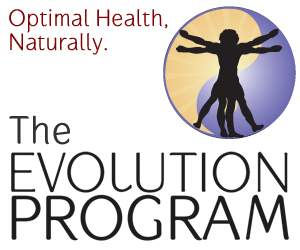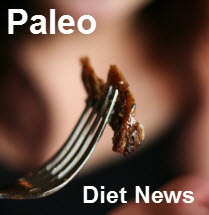Sun Exposure Habits of our Paleo Diet Ancestors
We all know that our exposure to the sun is vastly different from that of our Paleo ancestors. Nearly all of their activity took place outside, under the sky, when the weather was pleasant or at least bearable. Today, most of us spend most of our time indoors under artificial light, unless our profession is landscaping, or construction. This means we are not getting enough exposure. We evolved under the sun, from Africa to the most northern climes. To top it off, we also slather on sunblock because we’ve had it pounded into our heads that the sun causes cancer. But it’s the lack of sunlight that causes cancer and many other diseases. Perhaps we can learn from the sun exposure habits of our Paleo diet ancestors.
In an article on dietdoctor.com a new study about the serum levels of vitamin D3 in East African populations is examined in the context of our ancestors.
From sunny Africa to the dark north
Our human ancestors emigrated from eastern Africa and spread across the entire planet. That often meant that the sun became much weaker. Since vitamin D is produced by our skin when in strong sunlight their levels of vitamin D dropped rapidly when moving north, which may have led to severe health problems.
In an extremely short time, evolutionary speaking, the ancestors of northern people developed lighter skin. They rapidly shed their built-in sun protection, likely to catch all the sun and vitamin D that they could.
In not-so-sunny Sweden, where I live, a lot of people have severe shortage of vitamin D during the winter, despite having light skin. Statistically such deficiency is correlated with just about every disease there is. Such correlations doesn’t prove that the deficiency leads to all these diseases, but it’s possible that it contributes.
Obviously, living in the northern hemisphere means less sun exposure and therefore less vitamin D being made by the body. So when we avoid the sun we are reducing our ability to prevent all types of illness, from colds and flu to cardiovascular disease and osteoporosis.
In fact, another recent study showed that a quarter of all toddlers in the UK were severely vitamin D deficient. This is an extremely serious problem.
So what is a normal amount of Vitamin D?
What does normal mean and what would be the right serum level?
How much vitamin D is “normal” to have in your blood? That’s a common question. According to my lab between 75-250 nmol/L is normal, and below 75 is considered a deficiency.
- (Divide by 2.5 for values in ng/ml, i.e. 30-100 ng/ml would be considered normal)
This means that all the patients I’ve tested during the winter in Sweden are deficient, if they haven’t travelled south or taken a vitamin D supplement. Extreme deficiencies of 20 or less isn’t uncommon. The lowest I’ve seen is 14 nmol/L.
These extreme deficiencies have often been tired patients, sometimes with a history
of winter depressions. Taking supplemental vitamin D has several times led to remarkable recoveries within a few weeks. Well done trials have also shown significant such effects.
We can understand the sun exposure habits of our Paleo diet ancestors by looking at modern traditional societies living in East Africa.
This Masai woman gets her daily dose of vitamin D3 from sun exposure. Do you? Photo by javic. Image courtesy of Wikipedia.org
A study of traditionally living people in sunny East Africa gives us a clue to what’s normal. These people all have dark skin, built in sun protection. They spend most of the day outdoors but avoid strong sun when they can. Perhaps their skin and sun habits are similiar to our ancestors (who lived in the same environment).
The average vitamin D level was 115 nmol/L (46 ng/ml). The lowest level found was 58 and the highest 171. Here is the study:
- Luxwolda MF, et al. Traditionally living populations in East Africa have a mean serum 25-hydroxyvitamin D concentration of 115 nmol/l. Br J Nutr. 2012 Jan 23:1-5. [Epub ahead of print]
What to do if you live in the frozen north (or how to get vitamin D during the winter)?
For those who don’t spend their days outdoors in a sunny climate there are three good options to get vitamin D:
- Strong sun (travelling south or using a tanning bed with the right wave lengths)
- Eating fatty fish (350 grams daily may give you 2 000 units)
- Supplements (the cheapest, easiest way)
Personally I’ve been taking 4 000 units daily (recently increased to 5 000). I skip it during sunny summer times. This fall my vitamin D level was 95 nmol/L.
So load up on your vitamin D. If you can get into the sun daily, without sun block during the spring and summer, do it! These are the times to expose your skin to the sun. If it’s difficult then follow the guidelines above. Don’t be afraid to overdose on vitamin d supplements. According to the Vitamin D Council website, you really can’t OD. The amount you’d have to take for it to become toxic is ridiculously high.
The sun exposure habits of our Paleo diet ancestors are certainly something we can model. Remember, we evolved in the sunshine, we can handle it. Go out and soak up some rays!
What are your vitamin D3 supplementing habits? Do you sunbathe outdoors or on a tanning bed? Do you eat extra fatty fish, or simply take a supplement? Please share your experiences here in the comments section below. And please share this on Facebook and Twitter! Thanks!






My biggest concern with the Paleo approach is this nonsensical thoughts about tanning beds. Tanning beds are not good for you. There is no study in the world which shows them to be good for you. Seeing paleo proponents post about tanning beds makes me start to question the rest of the paleo approach.
Thanks for replying Steve.
I would say you shouldn’t throw the baby out with the bath water! Because I advocate the use of tanning beds does not mean that the entire paleo approach is incorrect. I’ve not seen any evidence that tanning beds are harmful, if used correctly. I certainly do not advocate using them for more that a short period of time, say 10 minutes. My source of information on this is Dr. Mercola’s and the Vitamin D Council websites. I find it unlikely that either would recommend a practice that would be harmful. Please post the source of your information. I am always willing to learn. And if my information is incorrect I will change my position. But please don’t throw out the paleo diet just because of this.
Thanks!